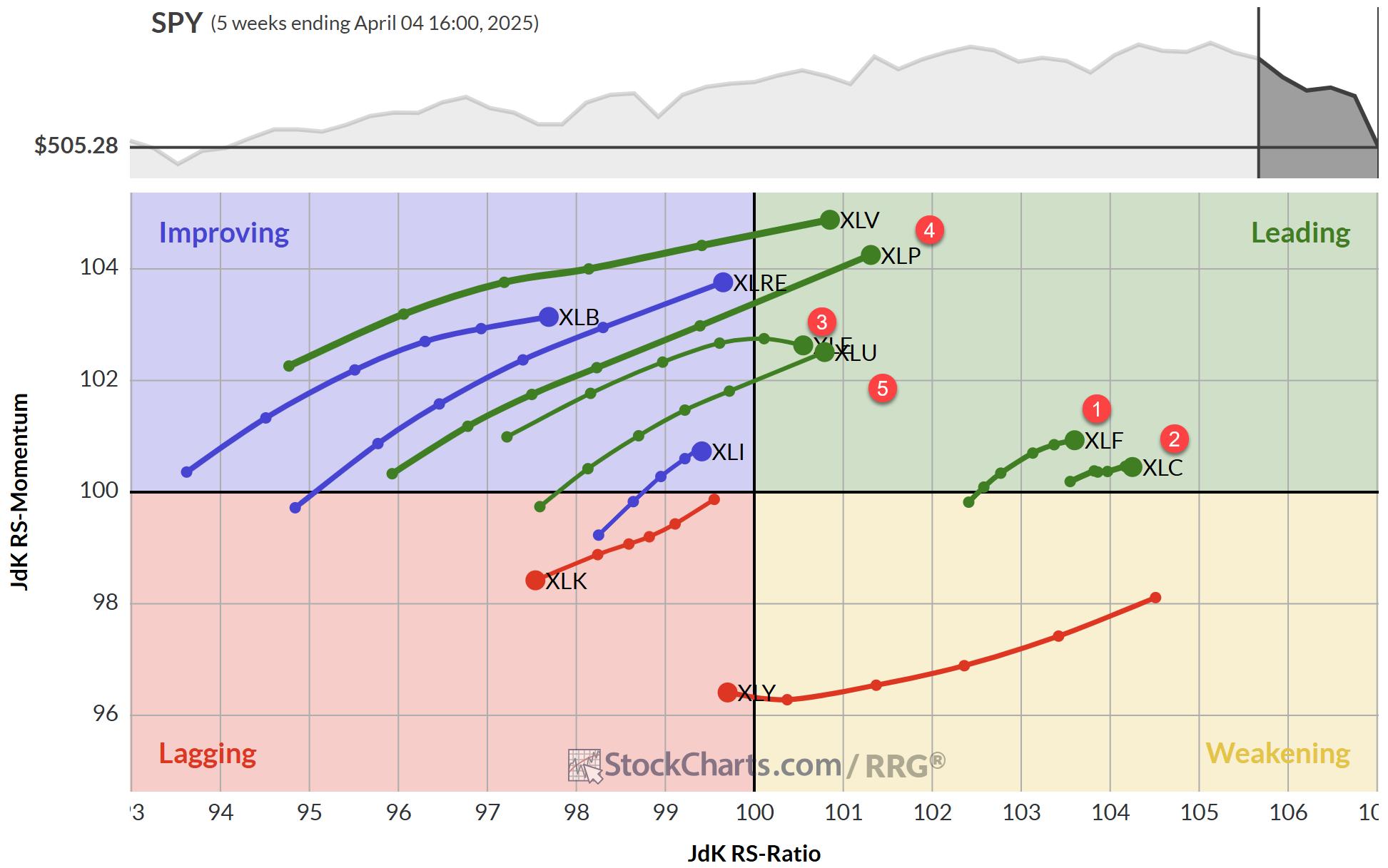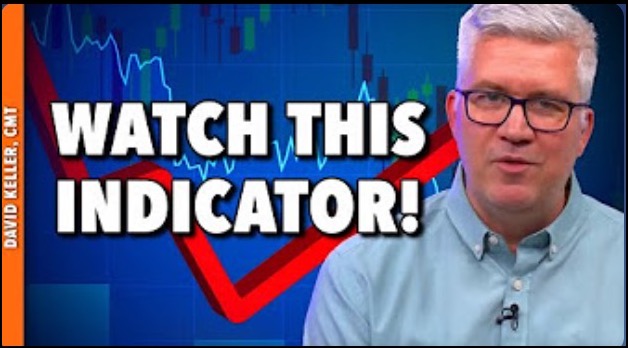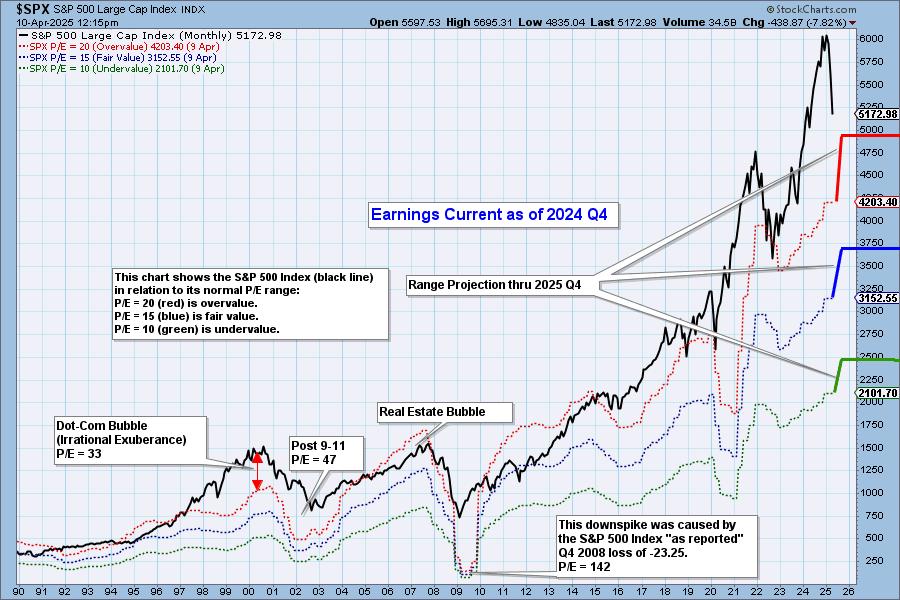
For a few weeks already I am monitoring the rotation between large-, mid-, and small-cap segments.
On the various Relative Rotation Graphs, the deterioration for Small-Caps and, to a lesser degree, Mid-Caps vs Large-Caps is clearly visible.

Over the last 13 weeks, Large Caps have pushed into the leading quadrant while Mid-, and Small-caps have entered the lagging quadrant. Very recently Small-Caps have managed to pick up a bit of relative momentum but they are still dropping in terms of JdK RS-Ratio. And Small-Caps are by far the lowest reading on the RS-Ratio scale.
Although there is no "definite" relationship (does such a thing even exist?) between the performance of small-cap stocks and the direction of "the market" we often see that small-caps are big drivers of rallies while they are the first to stop rising and/or start declining when the market gets in trouble. And that is what we are seeing for a few weeks now.
Growth/Value

Another great relationship to monitor and get a handle on general market conditions is Growth vs Value. And at the moment, when plotted on a Relative Rotation Graph, this gives a pretty clear preference for Growth over Value.

However, when I bring up the RRG that breaks down growth and value into size segments as well an interesting observation pops up.
By the way, this RRG is available from the drop-down selection for universes on the RRG page
In the red circle are all size segments of value stocks, confirming the general tendency for the relative downtrend of value against the market. In the green circle are all size segments for growth stocks EXCEPT for small-caps.
Small-Cap-Growth stocks are inside the improving quadrant in the orange circle and they are clearly an outlier on this picture. This suggests that the small-cap segment of growth stocks is not participating, or has stopped participating, in the relative uptrend for growth in general. I'll take that as a warning signal.
At Sector Level.
Finally, we can make the comparison between large and small-cap stocks at the sector level by bringing up the RRGs for both.
In general, the rotations for the small-cap sectors are more or less in line with their large-cap counterparts. However, there is one interesting exception.


The consumer discretionary sector is one of the most important growth sectors in the market
The first RRG above shows the rotation for XLY, the S&P 500 (=large cap) discretionary sector. The second RRG shows the rotation for PSCD, the S&P Small-Cap discretionary sector.
The almost opposite rotations show very clearly that the improvement in the Consumer Discretionary sector is coming from the large-cap stocks while the small-cap stocks in that sector are clearly lagging.
All in all, I continue to exercise caution with regard to stocks in general.
#StaySafe, --Julius
Julius de Kempenaer
Senior Technical Analyst, StockCharts.com
Creator, Relative Rotation Graphs
Founder, RRG Research
Host of: Sector Spotlight
Please find my handles for social media channels under the Bio below.
Feedback, comments or questions are welcome at Juliusdk@stockcharts.com. I cannot promise to respond to each and every message, but I will certainly read them and, where reasonably possible, use the feedback and comments or answer questions.
To discuss RRG with me on S.C.A.N., tag me using the handle Julius_RRG.
RRG, Relative Rotation Graphs, JdK RS-Ratio, and JdK RS-Momentum are registered trademarks of RRG Research.






